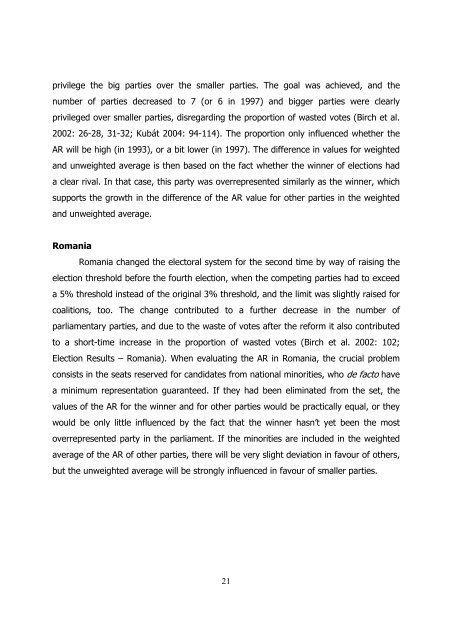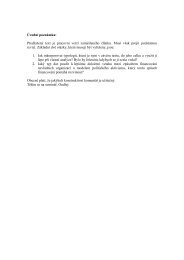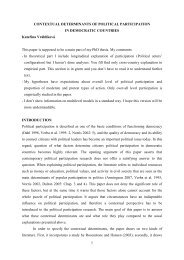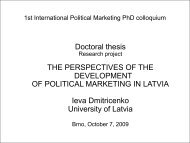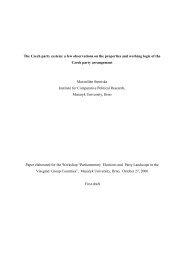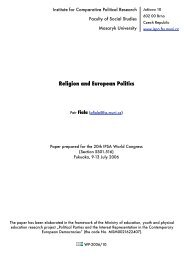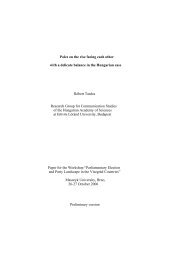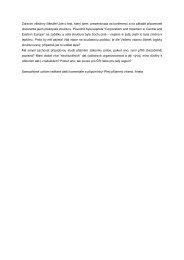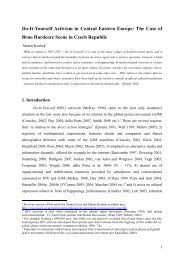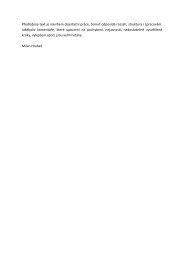Advantage Ratio as a Tool in Post-Communist Electoral Reforms ...
Advantage Ratio as a Tool in Post-Communist Electoral Reforms ...
Advantage Ratio as a Tool in Post-Communist Electoral Reforms ...
Create successful ePaper yourself
Turn your PDF publications into a flip-book with our unique Google optimized e-Paper software.
privilege the big parties over the smaller parties. The goal w<strong>as</strong> achieved, and the<br />
number of parties decre<strong>as</strong>ed to 7 (or 6 <strong>in</strong> 1997) and bigger parties were clearly<br />
privileged over smaller parties, disregard<strong>in</strong>g the proportion of w<strong>as</strong>ted votes (Birch et al.<br />
2002: 26-28, 31-32; Kubát 2004: 94-114). The proportion only <strong>in</strong>fluenced whether the<br />
AR will be high (<strong>in</strong> 1993), or a bit lower (<strong>in</strong> 1997). The difference <strong>in</strong> values for weighted<br />
and unweighted average is then b<strong>as</strong>ed on the fact whether the w<strong>in</strong>ner of elections had<br />
a clear rival. In that c<strong>as</strong>e, this party w<strong>as</strong> overrepresented similarly <strong>as</strong> the w<strong>in</strong>ner, which<br />
supports the growth <strong>in</strong> the difference of the AR value for other parties <strong>in</strong> the weighted<br />
and unweighted average.<br />
Romania<br />
Romania changed the electoral system for the second time by way of rais<strong>in</strong>g the<br />
election threshold before the fourth election, when the compet<strong>in</strong>g parties had to exceed<br />
a 5% threshold <strong>in</strong>stead of the orig<strong>in</strong>al 3% threshold, and the limit w<strong>as</strong> slightly raised for<br />
coalitions, too. The change contributed to a further decre<strong>as</strong>e <strong>in</strong> the number of<br />
parliamentary parties, and due to the w<strong>as</strong>te of votes after the reform it also contributed<br />
to a short-time <strong>in</strong>cre<strong>as</strong>e <strong>in</strong> the proportion of w<strong>as</strong>ted votes (Birch et al. 2002: 102;<br />
Election Results – Romania). When evaluat<strong>in</strong>g the AR <strong>in</strong> Romania, the crucial problem<br />
consists <strong>in</strong> the seats reserved for candidates from national m<strong>in</strong>orities, who de facto have<br />
a m<strong>in</strong>imum representation guaranteed. If they had been elim<strong>in</strong>ated from the set, the<br />
values of the AR for the w<strong>in</strong>ner and for other parties would be practically equal, or they<br />
would be only little <strong>in</strong>fluenced by the fact that the w<strong>in</strong>ner h<strong>as</strong>n’t yet been the most<br />
overrepresented party <strong>in</strong> the parliament. If the m<strong>in</strong>orities are <strong>in</strong>cluded <strong>in</strong> the weighted<br />
average of the AR of other parties, there will be very slight deviation <strong>in</strong> favour of others,<br />
but the unweighted average will be strongly <strong>in</strong>fluenced <strong>in</strong> favour of smaller parties.<br />
21


